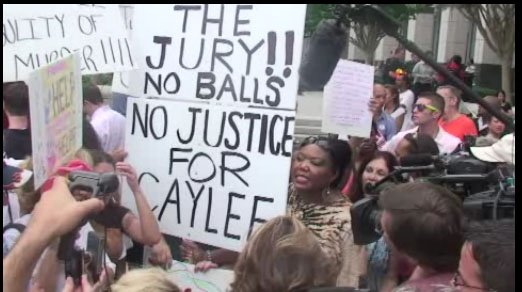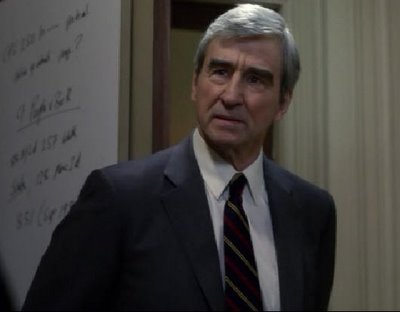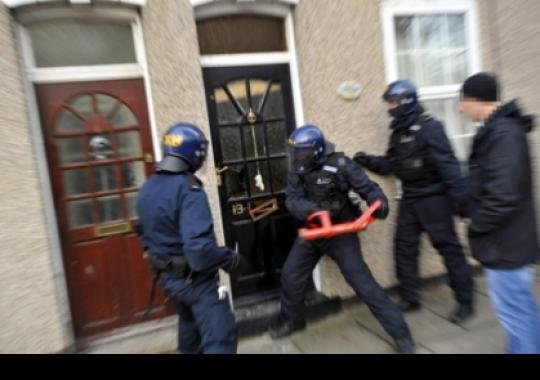Ostracization - Mob Rule or Individuals Acting in Their Best Interests? Pt. 2
(Note: For those who haven't read Part 1 of the "Ostracization" series, please read it first here.)
Now that we've established the first catalyst behind this version of ostracization, let's take a look at another catalyst: the usage of State intervention. I've already discussed how people's sense of "justice" plays a role, as well as establishing the inefficiency of the correctional facility's ability to rehabilitate inmates that will not become recidivists. In Law and Order's Mad Dog, Jack McCoy decides to use his power as an Assistant District Attorney to attempt to criminally prosecute, commit to a mental health institution in civil court, and harass Lewis Darnell (Burt Young).
When the police could not find evidence tying Darnell to a recent rape and murder crime, nor could McCoy have him committed in civil court, McCoy utilizes the law to subpoena Darnell's family, friends, co-workers, and members of his community to show up to trial on 4 separate occasions. He also got several affidavits to search Darnell's apartment (which his daughter and grandchildren live in), his work place, and to block any attempts of Darnell being taken in by any communities nearby. McCoy even went so far as to entrap (not by legal definition) Darnell into violating parole by letting him walk out of a police interrogation, of which he is law-bound to stay for indefinitely.

In regards to the Casey Anthony situation, the State did not engage her in this manner. However the Sanford and Orlando, FL community did engage in ostracization outside of the law. They took to protesting outside of the Anthony residence and heatedly engaging both Casey and her parents, as well as spreading awareness outside of the media (a parallel that can be drawn to Mad Dog with posters of Darnell being placed throughout his neighborhood). The eventual engagement led to Casey leaving her parents house and taking residence in various places in Florida and outside of the state.
Comparing the two approaches, Mad Dog's is much more malicious and eventually pushed Darnell into re-offending because of the usage of State force to ostracize him. Casey did not have such a harsh form of ostracization placed against her and, despite her and her family being engaged in a hostile manner and receiving threats, it was her choice to eventually leave in response to the community's reactions. Even though both instances can be perceived as a form of brutalism in action, what separates them from each other is the initiation or the threat of initiation of force.
Putting aside the death threats and threats of violence Casey received, which are immoral and diverge from ostracization and enter the realm of an individual threatening violence, the manner in which the community ostracized her was conducted in a voluntary and moral fashion. Disregarding their reasons behind it, they came together on the basis that they did not want Casey and her family being welcomed into the community. They used their natural right of free speech to express their opinions and let her know that they would not accept her.

With McCoy and his crusade to satisfy his sense of justice, he used the State to initiate force on Darnell to prevent him from working, leaving a hostile interrogation, taking up residence in other communities, and from living with his own family without the police searching his property. It didn't matter that there was no evidence tying him to the crime he was accused of, that he had already served 18 years of his sentence, nor did it matter that he was released on parole by the New York State Parole Board, McCoy wanted to push Darnell into admitting that he committed the crime and to go back to prison.
The distinction to be made here is whether or not someone's natural rights (not "State-given" rights) were violated, which is paramount to comprehending ostracization and its applications. When you ostracize someone without the use of State force or from your own force, this is a voluntary and moral action being taken. You are not preventing one's right to speak their mind, to physical well-being, or to owning and protecting their property. Although, through denying services and social-acceptance to a person(s), it makes it more desirable for that person(s) to either leave the community or appeal/contest the community's demands, there is no violation of their rights.

In using the State to further the act of ostracization or from using individual force/threat of force, this violates EVERY right that a person has. A person who is accused of a crime becomes forced into cooperation or must fight the legal system until either the State backs off or until the accused runs out of options to defend himself with. They can be run bankrupt and then thrown into prison based on the District Attorney's and court-appointed Judge's sense of vengeance and their tenacity.
This does nothing to deter them from re-offending and leaving the community, but adversely pushes the burdens of prosecuting and harassing them onto the taxpayer's back. It places them in a concrete cage that, if they are allowed the option, they will walk out of after their "time is served" to go right back into the community that does not want them.
(To Be Continued...)
This is awesome post,thank you for posting,your posts are very interesting. Thank’s.